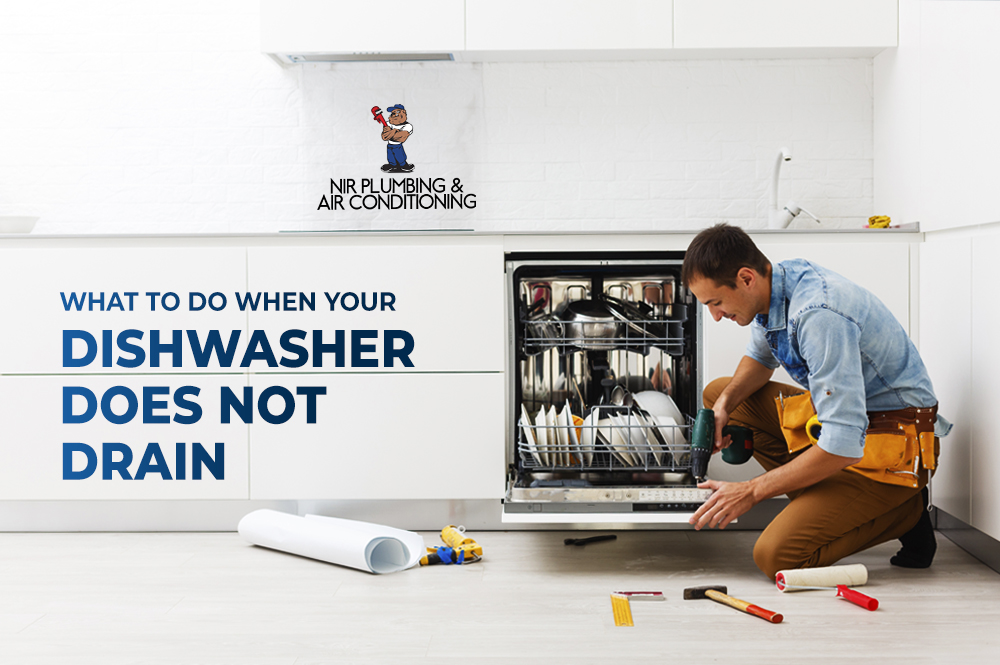Overview: Dishwasher clogs are a real hassle, but they’re solvable if you take the right steps. Let’s find out what we should do when the dishwasher doesn’t drain.
Did you open your dishwasher to wash a bunch of dishes only to find it stinky with a sudsy puddle inside? It’s an awful feeling, isn’t it? One of the most common problems reported to plumbers by homeowners is when a dishwasher doesn’t drain. Washing dishes is integral to household chores, and nobody likes piling dishes in the sink. While it’s scary to open the dishwasher’s door and see standing water at the bottom, trust us when we say: This isn’t always a plumbing emergency!
Tips to Do When Your Dishwasher doesn’t Drain:
If draining your dishwasher suddenly becomes an issue, try these simple techniques.
Step 01: Disconnect Power and Toe-Kit:
To start, disconnect the power by unplugging the dishwasher or turning off the circuit breaker. Then remove the toe-kit – that’s the panel placed near the floor.
Step 02: Run the Disposal:
Sometimes, air gaps in the hose connecting the dishwasher to the rest of the kitchen’s plumbing system may prevent water from properly draining out of the dishwasher. Simply running the disposal for about 30 seconds may fix the issue.
Step 03: Check for Blockage:
Did step 2 work for you? If not, we have another step to try! When food particles are rinsed off your dishes, the resulting debris often ends up at the bottom of the dishwasher. Check this area to ensure that food particles haven’t fallen from the rack to block the water flow.
Step 04: Clean the Drain:
When solid food particles go down the pipe under your dishwasher, but they’re too big to make it all the way through, they can get stuck in the drain. You can easily address this by cleaning the drain with a DIY solution. Mix equal portions of baking soda and vinegar and place the mixture in the clogged area. Let it sit for 15 minutes, then run a rinse cycle. With any luck, the blockage will be gone!
Step 05: Clean or Change the Filter:
Did step 4 work for you? Here’s the next thing to try if the problem persists. Search for your appliance’s filter, which may need to be rinsed or replaced entirely. Here’s some info on how to clean a dishwasher filter once you find it.
Step 06: Clean Your Sink’s Air Gaps:
Check your sink air gap if your dishwasher doesn’t have a garbage disposal. It’s a small slotted cylinder below the sink next to the dishwasher outlet hose.
If the air gap is the problem, remove it by turning it counterclockwise. If you didn’t find debris or food particles anywhere else in the dishwasher, it’s likely that you’ll find them there. For the cleaning process, a stiff brush will work perfectly. After you remove all the buildup, return the air gap to its place and try rerunning your dishwasher.
Step 07: Check & Clean the Drain Hose:
If the dishwasher still seems clogged, there might be an issue with the drain hose. Drain hoses are usually behind the dishwasher, so you’ll have to pull your appliance away from the wall to access it. This can be tricky!
Inspect the drain thoroughly for any kinks that may be preventing the water from draining. If it’s apparent that the drain hose is bent, try straightening it.
While you’re back there, check for clogs as well. If the hose is acceptable and doesn’t show any damage, place a towel and small container beneath the connection that joins the hose and clamp to catch water. Use pliers to loosen the clamp so you can easily remove the hose and examine the affected area.
Once you find a clog, the best thing is to flush the hose with hot water and wait to see if the water will flow properly.
If the hose is clogged, use a drain or hose cleaner and follow the product instructions in the manual. Try flushing out the debris – after erasing the clogs, reattach the hose to the appliance. While cleaning the hose isn’t a daunting task, it’s possible that the hose will be so clogged that it’s a lost cause. In such a case, you’ll need to replace the hose.
Replacing the hose requires professional hands. In such case, feel free to reach out to an industry spet.
Related Reading: 3 effective ways to clean the dishwasher hose
Step 08: Load the Dishwasher Correctly:
Putting an extra load on a device beyond its intended capacity usually doesn’t end well. While you’re taking the time to troubleshoot, make sure that you’re loading the dishwasher correctly. The best way to strike the right balance is to read the manufacturer’s instructions or the owner’s manual on how to load the dishes.
In Summary:
Dishwasher clogs are a real hassle. They can be fixed, but an even better scenario is to prevent them from ever happening in the first place. Our advice on keeping your dishwasher clog-fee is to take care of it in advance. Remove large pieces of food that can potentially clog the drain before you run it. Moreover, take a peek inside the dishwasher periodically to make sure all its components are in good condition before washing the dishes.
We hope that this guide helps you to resolve your dishwasher issues. If you find these steps overwhelming, or if you’ve tried them all but you still have a problem, schedule a repair with NIR Experts to help get your dishwasher back in working order!


